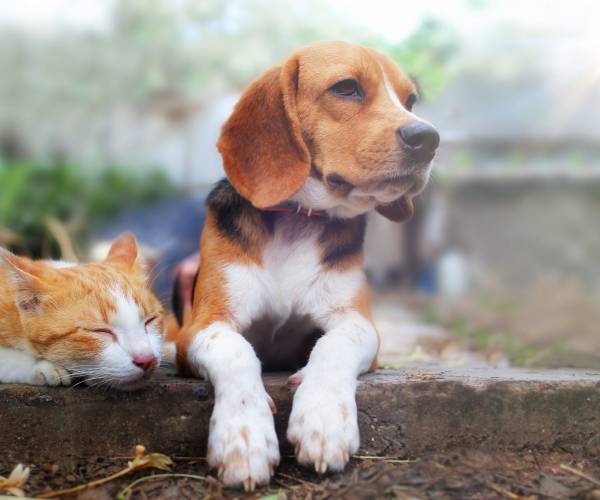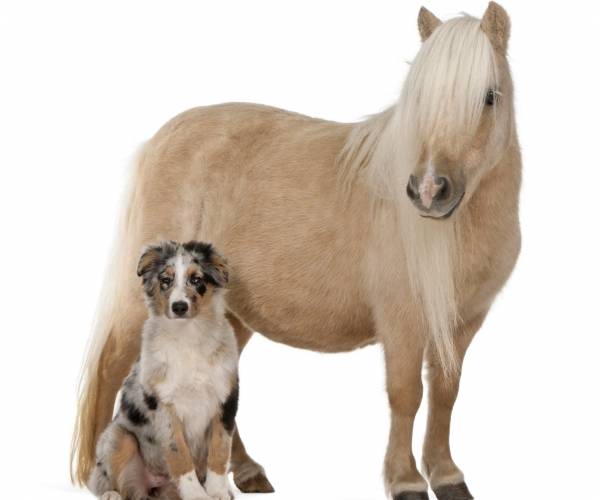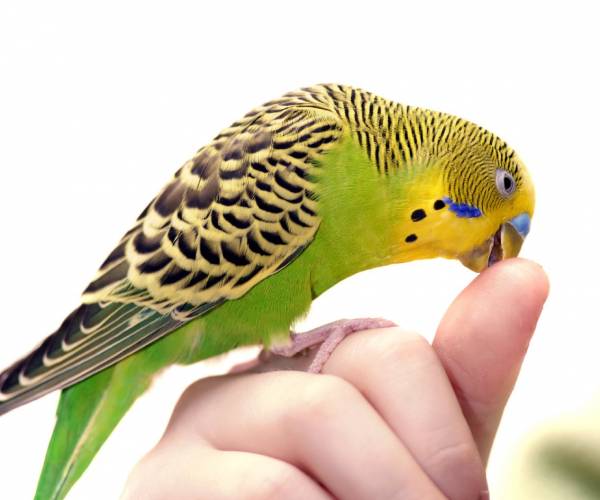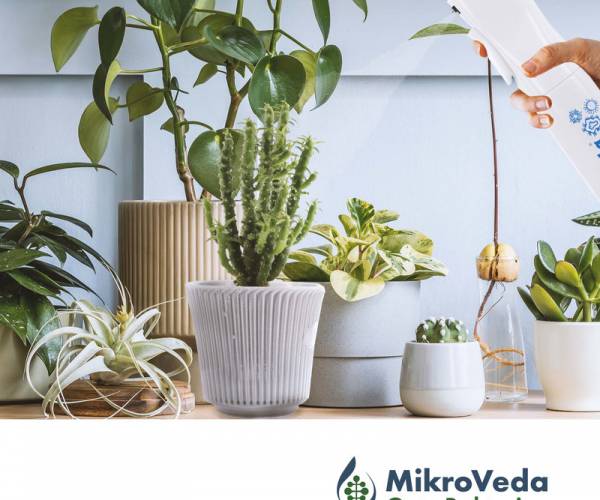
Good bacteria for fur and feather friends
Just as we care about our own health, we usually care about the health of animals. Especially with animals that live in our immediate environment, sometimes even in close quarters with us, we build bonds, show consideration and act for their good. It is mainly the domestic animals and livestock in our environment that are now experiencing similar health problems as we humans.

Microbiome Balance for horses
Feeding, care, stable cleaning, pasture management – a comprehensive, organic concept for your horse! A horse of your own –…

Bee care completely without chemicals?
A brief introduction for the occasion: May 20 is World Bee Day! On the occasion of this day, it is…

Naturally support worming treatment in dogs and cats
Veterinarians recommend: Dogs and cats should be wormed regularly, it is part of the annual routine for us pet owners.…
But why do our animals also increasingly have problems with their skin or digestion, just as we observe with us?
First of all, it can be said that our pets and farm animals live together with us in the same time and in the same world. This also means that animals can be confronted with the same problems:
- Pesticide use in the fields
- Additives in feed
- Antibiotics in feed
- Antibiotics in case of illness
- Industrial food instead of “fresh" food
It is exactly the same factors as with us that can make animals more susceptible to disease today. Even stress, which work often causes in us humans, can perhaps be found in animals in that the restlessness in humans, and thus the possibly temporary lack of time of the human caring for the animal, could also have a negative effect on the animal.
In times when we are “lacking something", we humans take nutritional supplements, take a more conscious look at our diet, increasingly avoid industrially processed foods, focus on the quality of raw materials and actively try to reduce stress. This is how we usually get our everyday complaints under control.
Can an animal react in the same way? No.
If we look at the complaints of animals, we again find great parallels to us humans:
Digestive problems:
- Bloated belly
- Diarrhoea
- Constipation
- Intolerances
Skin problems:
- Rash
- Itching
- Redness
- Sensitive skin irritations
Ears, nose, mouth:
- Shortness of breath
- Asthma
- Earache
- Caries, periodontal disease, bad breath
Condition:
- Listlessness
- Tiredness
- Irritability
Most of these complaints can have their cause in our living environment and our diet.
So if we value our own health and well-being, we should be attentive that our animals also feel healthy and well. Because they have the big problem that they are dependent on us. They cannot tell us verbally when they are not feeling well and where it hurts, nor can they choose their food or the place where they sleep. The responsibility therefore lies with us to be attentive and to act in the same way when the animal is not feeling well. Medication is certainly appropriate in the case of serious illness, but is not effective in the long term for everyday complaints.
But what is the solution? How can I support my pet’s health?
Your pet’s microbiome may not be balanced. Just like in humans, many billions of bacteria live on the skin, under the skin, in the body of our animals. These microorganisms organise everything organic quite well as long as they can work in balance. If disturbing influences come from outside, the balance is disturbed, pathogenic germs take over and the animal is more likely to fall ill. These influences can be manifold:
- Sterile environments with too few important microorganisms (as well as via the respiratory air as via the skin).
- Germicidal, chemical cleaning agents that take away the habitat of any micro-organisms (animals sometimes lick the floor, so think carefully about what you clean with).
- Nutrient-poor food
- Use of antibiotics (taken as treatment or in feed)
- Contact with pesticides, herbicides or other poisons.
Looking at these triggers, it quickly becomes clear to us humans what we can do:
- Use natural means to keep the habitat of our animals clean.
- Don’t keep everything sterile in the living environment. Our organism needs “good" bacteria that naturally inhabit our living space.
- Give fresh food, as high quality as possible (this does not mean the manufacturer’s name, but the raw material purity and balance).
- Do not give medication immediately after every indisposition, especially be careful with antibiotics and seek professional advice. Consult your veterinarian about this.
- Avoid any contact with pesticides, herbicides and other poisons.
The important microorganisms today have a difficult time ensuring a healthy microbiome at home. The natural bacterial population in our habitat forms our microbiota. This surrounds us and is inside us. The sole mission of this “organ" is to maintain a healthy balance, to maintain life. Microorganisms are the life and that of our animals. Without them, they get sick. If the healthy microbiome is disturbed, typical symptoms can occur, such as those listed above. There are many more.
Is it enough today to take the above points to heart?
Unfortunately, no. The bacterial colonisation of animals arises from what they were given at birth, from their food and from the environment in which they live. However, as these milieus are under antibacterial pressure in everyday life – indeed, even the air we breathe can have a low-microbe diversity – it is helpful to help out. In this way, we can specifically enrich our environment with coordinated microorganisms. The basic research on symbiotic microorganisms originated in Japan and has been continuously refined over the past decades and is far from having reached the end of its potential. It is not a matter of chemical compositions or genetic modification, but of bringing together bacteria that occur freely in nature. This includes, for example, lactic acid and photosynthetic bacteria as well as yeasts, tuned according to nature’s example. Through gentle fermentation, the MikroVeda microorganisms produce enzymes and vitamins as well as short-chain fatty acids, which are particularly cell-available for humans and animals and essential for healthy cells and thus a healthy organism.
You can spray, pour or ingest these microorganisms and they will fulfil their natural purpose, the preservation of life. For this reason, you can add specially formulated products to your animal’s environment without hesitation.




Which products are best for my pet?
Preparations such as care products, especially for sleeping areas and the skin or coat, act completely naturally, without artificial, disturbing additives. Supplementary feeds with MikroVeda microorganisms can be ingested and thus work from the inside.
The difference between the preparations lies in their composition. For example, health-promoting, coordinated herbs are often added, which can support the healthy function of the gastrointestinal tract. We use our own special formulas and processes, which differ in the number of bacteria, composition and other natural ingredients. This also leads to considerable differences, for example, in the shelf life and effectiveness of the preparations. Microorganisms can indeed only work effectively if they are optimally combined. This happens through the appropriately applied fermentation processes, which have been constantly refined over the many years. Here, the recipes of different manufacturers differ greatly.
How can I tell the difference in quality?
At first glance, this is not so easy. The exact recipe and the processes behind it are of course part of the manufacturer’s know-how, and you can’t tell much from the list of ingredients alone. However, it can be stated that microorganisms can only unfold their full effect if they are in the right combination. For example, the addition of pure lactic acid bacteria cannot be attributed to symbiotic micro-organism technology. There is no question that lactic acid alone can also be used effectively to support the digestive system. However, the overall effect of the MikroVeda microorganisms and the corresponding influence on the respective addressed milieu is much more complex and the combination of these in a stable preparation is likewise.
Criteria for good quality could be, for example:
- Ingredients and transparency on the label
- Certifications, experience, technological and scientific cooperation
- Gentle fermentation process in each case adapted to the area of application
- Quality management (including laboratory analysis, bacteria bank and type thereof)
- Microbes have been incorporated into a long-term coherent milieu (this is the only way for the effectiveness to unfold)
- The effectiveness should become apparent after a few weeks.
Since not all of the information can be assessed objectively, a product from the field of symbiotic microorganisms is always a matter of trust with the manufacturer.
Many customers attach importance to other quality features that do not affect the effectiveness of the microorganisms. Externally recognisable aspects such as organic quality or production in Germany can already be seen on the label.
Good bacteria and their products for successful metabolic processes?
There are no sick animals in whose disease process their bacteria are not at least involved. So it is a matter of restoring the balance. This is the sole task of the microorganisms. They have joined together to preserve life and promote life. Thus, pathogenic germs no longer have it too easy to form majorities, which would result in pathological processes. Microorganisms work on the skin and in the body, in the organs, simply everywhere. Also outside the animal, on the sleeping area, in the food, even in the air. They clean, transport, convert, release and make minerals, trace elements and vitamins available to the cells. They are responsible for the processes of the animal body in the utilisation of everything that touches them. If they are in balance, they do their job well and the animal lives happily and healthily. If they are disturbed, they work flat out to restore the balance. If they do not succeed, the animal becomes ill. If we enrich the environment and the food with MikroVeda micro-organism preparations, their work can be supported and the balance can be restored more quickly. Quite naturally.
How? It is the valuable active substances that arise from fermentation that support the important metabolic functions in the body, thus also keeping the microbiome in balance.
How do I use MikroVeda microorganism preparations for my animal?
You can use MikroVeda micro-organism preparations for any animal, as the special preparations are adapted to the organism of the respective animal.
Examples from MikroVeda preparations:
Cats: initially 2 drops daily with food, increase after 3-4 days.
Dogs: 10-40 drops daily at the beginning, increase after 3-4 days.
Small animals: adapted to body size
Ornamental birds: 2-4 ml per 1 litre of water, 1-2 ml daily in the drinker/bath water.
Horses: ProbiotiX Life and ProbiotiX Vital as supplementary feed or Care Horses as stable, coat and hoof care.
Experiences with MikroVeda Microorganisms
In the following areas of the animal world there is sufficient and well-founded experience with the use of MicroVeda Microorganisms:
- Agriculture and horse husbandry (silage feeding, forage/supplementation, field/soil enrichment, stable care).
- Poultry farming (stable care and feed supplementation)
- Ornamental birds (cleaning and supplementary feed)
- Fish farming (feed supplementation and water enrichment)
- Pets (cleaning, care and supplementary feed)
- Zoo and animal park (cleaning, care and supplementary feed)
- Bees (to support treatment against the Varroa mite, for hive care and to promote intestinal health over the winter)
etc.
Typical exemplary effects of an improved microbiome:
- Animals appear more balanced and contented
- Shiny coat, feathers etc.
- Healthy hooves, feet, joints etc.
- Healthy organ activity (healthy microbial flora can be determined by stool samples)
- Increased milk yield in cows
etc.
Popular posts

Microbiome Balance for horses
Feeding, care, stable cleaning, pasture management – a comprehensive, organic concept for your horse! A horse of your own –…

Bee care completely without chemicals?
A brief introduction for the occasion: May 20 is World Bee Day! On the occasion of this day, it is…

Naturally support worming treatment in dogs and cats
Veterinarians recommend: Dogs and cats should be wormed regularly, it is part of the annual routine for us pet owners.…

Terra Preta project in the municipality of Tönisvorst
Good bacteria at work for healthy soils and plantsThe first weekend of September 2020 was the day. In a first…

Elk healthy in the Wildlife park Rhineland
Good bacteria from MikroVeda in successful use on moose.Etienne Cousin from Hochwildpark Rheinland reports on the successful use of MikroVeda…

Spray your microbiome! Mikroorganisms easy to spray on
It is not new that our microorganism combination convinces our customers in its application. But how to use our preparations…

